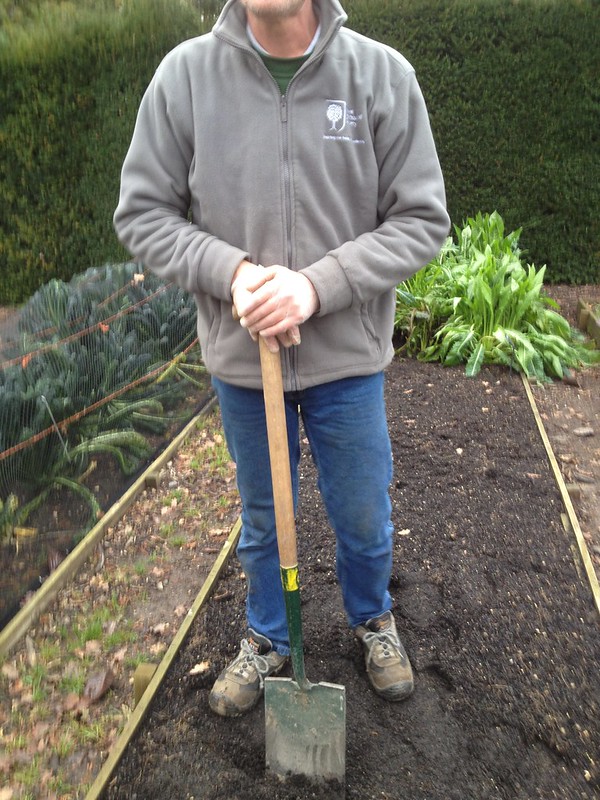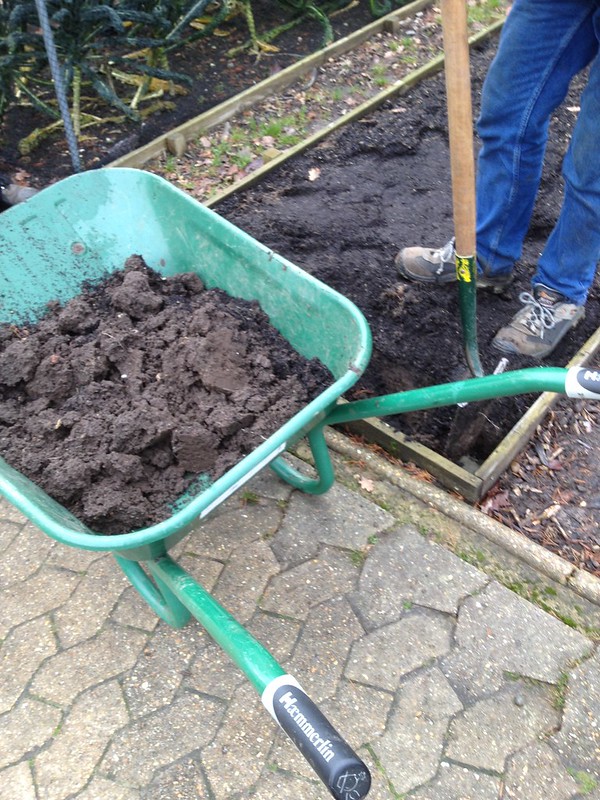So I'm still undecided what is best: digging that organic matter into the soil (some say deep down through double digging so as to make the soil more porous and make life easier for roots, especially on heavy soils, like my plot's is) or layering it on the top, suppressing weeds and leaving worms and biota to do their thing, as it would normally happen in nature, with fallen leaves and other organic debris (as deep roots are mainly for stability awhile shallow roots get most nutrients)?
Vegetable plots are rather artificial environments anyway, the soil is compacted and weeds (especially ruderals) abound of bare ground, so digging has traditionally been recommended to bury the weeds and aerate the soil while breaking any pans.
 |
| Correct size of spade |
 |
| Step one: fill a barrow |
Then one needs a barrow, where they will store the first row
of digging, which needs to be a spit dip and a spade width's wide.
Any matter that needs diggin in should be spread before starting usually to the rate of one barrow every 2 sqm (but never mix manure and lime because they release ammonia, which is a polluting gas and which takes away all the nitrogen; you need at least three weeks between one and the other).
The next step is to find how much soil you can comfortably lift, and dig linear strips, every spadeful roughly the same amaount of soil, filling with it the trench ahead of one (the first one being that which went into the barrow). And so on until the end of the area that needs digging, finishing by filling the last remaining strip with soil from the barrow.
 |
| A perfectly done, and a less skilfully dug bed side by side |
I and my fellow trainees had a go. It was really clear that my technique fell short of the perfection our teacher possessed: in fact, his finished bed was even, without dips and bumps, while mine was rather rough, because I could not calibrate the amount of soil I lifted evenly enough. That will require some raking before sowing... and I will need more practice! That is why I'm here, after all.
Wisley has rather a sandy soil, which can be dug throughout the winter, from October and through to March. Heavy soil are best dug earlier on, up until November, so that rain and frost break up any lumps. But I also find bare ground over winter a heresy myself: you should see how all the topsoil is washed away on my plot, every year in the winter, leaving behind a sea of white stones, the chalk and flint on the surface. It is quite a disconcerting sight...
We were also instructed that some crops like carrots dislike recently disturbed soils, so planning in advance is certainly a takeaway for me.
About earthworms, I found this very interesting blog post
No comments:
Post a Comment